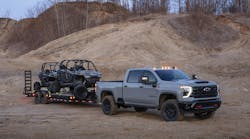As a locksmith specializing in the automotive sector, I resisted purchasing transponder programming equipment for a long time. A couple years ago, my business slowed down because those non-transponder vehicles were disappearing from the roads. My customers are mostly auto dealers and suddenly all their cars needing keys had transponder security. It was time to bite the bullet and invest in a tool to do programming. My customer base covered a wide variety of vehicle models and I decided on the T-Code by Advanced Diagnostics because of it seemed to support most vehicles.
As with any new tool, there is a certain learning curve. Most of the problems which have arisen were due to my inexperience. One early lesson was when it took three blanks and two days of work before discovering that the transponder for a Mitsubishi Galant changed from year to year and I had the incorrect blanks. This was a costly lesson.
It always pays to have the most up-to-date instruction manual and then to read the instructions. An example was my recent experience with a 2006 Chrysler 300. The Chrysler dealer had furnished me with the key code and the four-digit PIN code. What could be easier? It was going to be a five-minute job.
Key fitting went easy enough. The first key was made on a standard metal head blank to be sure the key code was correct. After testing, the cuts were transferred onto the correct Strattec blank and it was time for programming.
My old tattered T-Code instruction book indicated that the car used a CAN 1 system. I snapped the Type 1 module into the T-Code and tried programming without success. My next step was to snap in the Type 2 module and try again. This also proved unsuccessful.
By this time I was as hot as the weather which was in the upper nineties. The only alternative I could think of was to call Advanced Diagnostics on my cell phone and I am glad I did. Apparently some of the 2006 Chrysler 300 models used a CAN 5 system. I was told that the CAN 5 system requires a four-digit PIN code plus a response code.
Fortunately Advanced Diagnostics can furnish the response code. During programming, the T-Code screen will show a ‘challenge' code. The T-Code must stay connected to the vehicle at this point while the T-Code website is contacted. With proper identification, T-Code personnel will furnish the response code to be entered. Once the response code is entered, key programming can be quickly completed.
In this case the T-Code people were kind enough to furnish the response code over my cell phone instead of by Internet. The very next day I purchased the latest 2007 T-Code instruction book and I am back in business.





